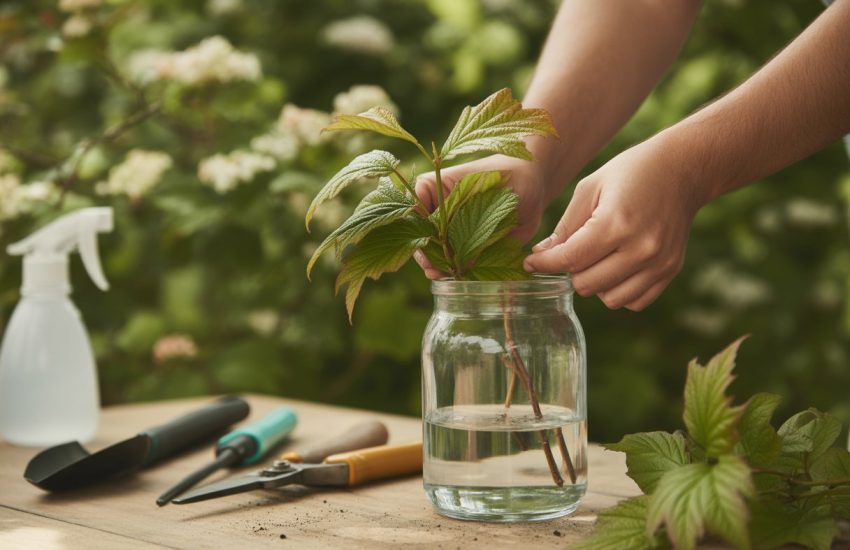Why Are My Philodendron Leaves Turning Transparent?
As a proud philodendron owner, you’ve undoubtedly constantly marveled at the vibrant greenery of your cherished houseplant. However, if you’ve observed a puzzling transformation in your philodendron leaves, with them becoming mysteriously transparent, it’s essential to investigate the potential causes and promptly address the issue.

Healthy philodendron leaves should have that vibrant and opaque green look, so when you start seeing translucent leaves, it’s usually an indicator of an underlying issue. How you approach these philodendron leaf issues requires a more than basic understanding of plant care and a firm overview of the factors that can cause this.
So read on as we explore the importance of addressing this issue for philodendron enthusiasts and, more importantly, fulfill the crucial role of providing practical solutions and explanations to help your beloved plant regain its former glory.
How to Spot Philodendron Plants With Transparent Leaves Issues
To identify and address any issues with your philodendron plant leaves, it’s crucial first to understand what a healthy philodendron plant should look like.
Philodendron leaves are large and glossy, and feature a deep green color, indicating a rich amount of chlorophyll in them. The leaves are also firm with a smooth texture and often spot a heart or oval-shaped shape. They are arranged alternately on the stem and can grow up to several feet long, depending on the species.
Transparent leaves in philodendrons are a sign of an underlying problem that disrupts the usual vibrant appearance of the plant. Instead of the lush green color and firm texture, these leaves appear translucent, as if they have lost vitality. Transparent leaves in philodendrons can be identified by the following characteristics:
- The affected leaves appear partially or entirely translucent, often showing the internal structures of the leaf, such as veins.
- Transparent leaves lose their green color and become pale or yellowish.
- They may feel brittle or fragile, and you can sometimes see tiny holes or perforations in the leaf tissue.
- The leaves might develop wrinkles or creases, which are not characteristic of healthy leaves.
- In some cases, the affected leaves appear droopy or have a distinct wilted appearance.
These signs indicate that the plant is not receiving the necessary nutrients or is facing environmental stress. But it’s essential to differentiate transparent leaves from other typical leaf issues in philodendrons, such as yellowing, browning, curling, or black spots. Transparent leaves are unique in that they become almost see-through, while other problems may present as changes in color or texture without the same level of transparency.
What Are the Causes of Transparent Philodendron Leaves?
Philodendron plants are known for their stunning green leaves, but if you’ve noticed that they are turning transparent, it’s essential to identify the root causes of this issue. Identifying the cause of your beloved plant’s loss of its green color is the initial step in addressing the issue. Once you determine the underlying causes of the transparent philodendron leaves, you can then proceed to take the required actions to correct it and support the restoration of your plant’s lively green color.
Natural Aging Process
One common reason philodendron leaves turn transparent is the natural aging process. As the leaves age, they may gradually become thinner and more translucent before eventually dropping from the plant. This is a normal part of the philodendron’s life cycle, and it shouldn’t cause concern unless many leaves turn transparent at once.
Overwatering
Overwatering is a common mistake made by philodendron owners. When the roots are consistently waterlogged, it seriously impedes the plant’s ability to absorb nutrients. This limits what is available for the leaves and reduces their growth. The surplus moisture in the soil can also encourage root decay.
Underwatering
On the flip side, underwatering can also cause philodendron leaves to turn transparent. When philodendrons don’t receive enough water, they may struggle to transport nutrients to the leaves, causing them to lose their healthy green color. The leaves end up becoming parched and transparent. If you underwater your plant, the leaves will start to wilt and dry out.
Inadequate Lighting
Insufficient light can weaken philodendron leaves, causing them to become transparent. These plants thrive in indirect light, and inadequate light means they cannot produce enough chlorophyll, which gives leaves their color. Transparent leaves may indicate that the plant is struggling to convert sunlight into energy and nutrients. Also, when philodendrons are exposed to direct sunlight for prolonged periods, their leaves may begin to turn transparent as a defense mechanism. The excess light makes the plant lose water more rapidly, giving it a translucent appearance.
Nutrient Deficiency
A lack of essential nutrients can result in philodendron leaves losing their green color and becoming transparent. When the plant doesn’t receive the necessary nutrients, it may redistribute them from older leaves to newer growth, leading to the transparency of older leaves. Several factors, including poor soil quality, infrequent fertilization, or pests and diseases, can cause this. Deficiencies in micronutrients like iron and magnesium can also cause leaves to turn transparent.
Pest and Disease Issues
Transparent leaves can also be a result of severe pest infestations or diseases. Certain pests, such as spider mites, mealybugs, or aphids, can damage the leaf tissue, causing them to become thin and translucent. Scale insects attach to the stems of philodendrons, feeding on plant juices that should have originally nourished the leaves. Their feeding can result in leaf discoloration and transparency. Diseases like fungal leaf spot disease and bacterial leaf blight can cause discolored spots on philodendron leaves, which may turn transparent as they progress.
Restoring Health to Transparent Philodendron Leaves
Once you notice that the leaves of your philodendron plants have become transparent, it’s a clear sign that your plant is experiencing health issues. To help your philodendron recover, consider the following techniques to revive its fading foliage:
Prune Already Transparent Leaves
Pruning is an essential practice for philodendron care, and it directly impacts the health and appearance of their leaves. Regular pruning helps to remove damaged, yellowing, or transparent leaves. Removing the affected leaves allows the plant to redirect its energy to healthier foliage and produce new leaves.
To prune transparent philodendron leaves, use a sharp pair of shears to cut the leaves at the base of the stem. It is ideal to trim the damaged leaves as close to the main stem as possible without injuring it. Cut at a slight angle to discourage water from collecting on the cut surface.
Adjust Your Watering Habits
The chlorophyll within the leaves gives philodendrons their rich green color, and when watering practices go awry, it can affect the plant’s ability to maintain chlorophyll levels. As a result, leaves can become transparent or pale.
If you’ve observed that either overwatering or underwatering is causing the transparent leaves, you need to adjust your watering habits. For overwatered philodendrons, let the soil dry out completely before watering again. For underwatered philodendrons, water the plant thoroughly until water runs out of the drainage holes, but avoid leaving the plant sitting in standing water. Allow the soil to dry out between waterings, and ensure your plant is in a well-draining pot to prevent soggy roots.
Correct the Lighting Reaching the Plant
Philodendrons are native to the rainforests of Central and South America, where they thrive under the dense canopy of trees. Consequently, they have evolved to prefer filtered, indirect sunlight. If you think that inadequate lighting is causing the transparent leaves, you need to move the plant to a better location to ensure it receives optimal light. But avoid placing the plant in direct sunlight, as the intense light can easily damage the leaves. You can supplement natural sunlight with artificial lighting, such as fluorescent or LED grow lights, especially in areas with limited natural light.
Provide a Balanced Nutrient Profile
To prevent nutrient deficiencies and maintain healthy leaves, it’s essential to provide your philodendron plant with a well-rounded and suitable fertilizer. Choose a fertilizer with a balanced Nitrogen-Phosphorus-Potassium ratio to supply the required macronutrients. Your fertilizer mix should also include all the necessary micronutrients, especially iron and magnesium. Additionally, consider a slow-release fertilizer to ensure a continuous nutrient supply and minimize the chance of excessive fertilization.
Deal with Pests and Diseases
If, after observing your plant, you conclude that pests or diseases are causing transparent leaves, it’s crucial to address these issues promptly. For pests, use natural remedies like neem oil or insecticidal soap to eliminate them. For diseases, remove affected leaves and maintain proper plant hygiene to prevent their spread. Isolate the affected philodendron from other plants to avoid contamination. Encourage natural predators like ladybugs and parasitic wasps to control pest populations.
Leaf Propagation
If you’ve noticed your philodendron leaves turning transparent due to environmental stress, it’s not too late to restore their health. Leaf propagation is an effective method to rejuvenate your philodendron, offering a fresh start for those struggling leaves. Select a healthy leaf with a node and place it in a moist, well-draining substrate. Over time, it may develop roots and grow into a new plant, allowing you to start fresh with a healthy philodendron. The new growth from the propagated leaf is typically healthy and less stressed than the original, damaged leaves. Leaf propagation is not only a method for rejuvenating your philodendron but also a means of preserving the genetic material of the plant, ensuring that you can continue to enjoy its lush foliage for years to come.
How to Prevent Transparent Philodendron Leaf Issues
Transparent philodendron leaf issues can be a cause for concern, but the good news is that you can take proactive measures to prevent this from occurring in the first place.
Proactive Strategies that Help Prevent Philodendron Leaf Discoloration
- Avoid exposing them to direct, intense sunlight, which can lead to transparent leaves. Place your plant near a window with blinds or sheer curtains to provide filtered light.
- Maintain a temperature within the range of 65-80°F (18-27°C) for your philodendron. Adequate humidity, preferably around 50%, can help prevent stress and leaf issues.
- Plant your philodendron in well-draining soil to prevent waterlogged roots, which can contribute to leaf problems.
- Provide sufficient space for your philodendron to grow, ensuring that leaves have enough room to spread and receive light.
- Water your philodendron when the soil is dry to the touch. But avoid overwatering the plant as it can lead to root rot or underwatering, which will starve the plant.
- Repot your philodendron when it becomes root-bound or the soil is depleted of nutrients. This can help rejuvenate the plant and maintain leaf health.
- Regularly inspect your plant for signs of pests or diseases. Transparent leaves are often a symptom of underlying issues.
- Recognize that philodendron care requirements may change with the seasons. Light, temperature, and humidity levels may fluctuate, and your care routine should adapt accordingly.
- When introducing new plants to your collection, quarantine them for a few weeks to prevent potential pest or disease issues from spreading to your philodendron.
- Maintain a clean environment around your philodendron. Dust the leaves regularly to prevent a buildup of dust and debris, which can hinder photosynthesis

Final Thoughts on Clear Philodendron Leaves
For most enthusiasts, your plant having a bunch of clear philodendron leaves previously was a cause for concern, but now it need not be a bother. The transparency of philodendron leaves is a clear indication that your plant is experiencing stress or health issues. By understanding the factors that contribute to this condition and implementing proactive measures, you can maintain the lush green foliage that philodendrons are known for.
References:
https://houseplantresourcecenter.com/2022/11/the-ultimate-guide-to-philodendron-plants-everything-you-need-to-know/
https://www.lovethatleaf.co.nz/blogs/plant-care-guides/why-plants-leaves-turn-translucent-after-watering
https://flourishingplants.com/leaves-turning-transparent-or-translucent/
https://www.growingreenhouse.com/why-are-plant-leaves-turning-translucent/
https://plantcarer.com/leaves-turning-transparent-or-translucent/
https://hydroponicsdaily.com/transparent-leaves/
https://www.ukhouseplants.com/plants/philodendron-care
https://houseplantresourcecenter.com/2022/11/the-ultimate-guide-to-philodendron-plants-everything-you-need-to-know/
https://www.thespruce.com/grow-philodendron-houseplants-1902768
https://www.epicgardening.com/philodendron-varieties/
https://www.gardeningknowhow.com/houseplants/philodendron/caring-for-philodendrons.html


